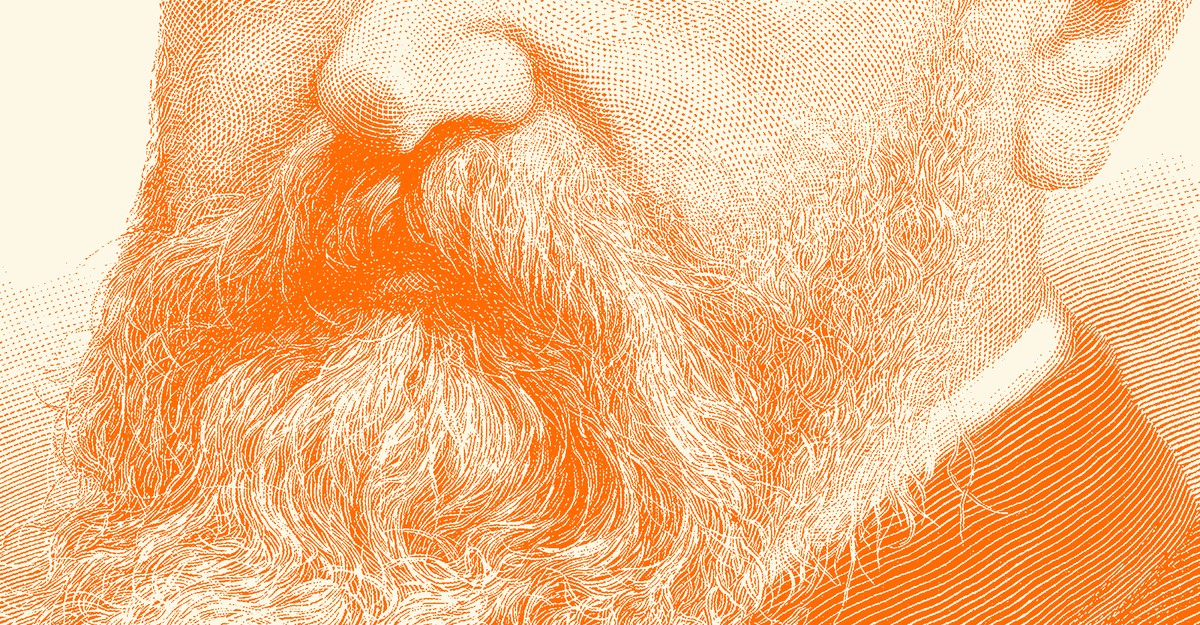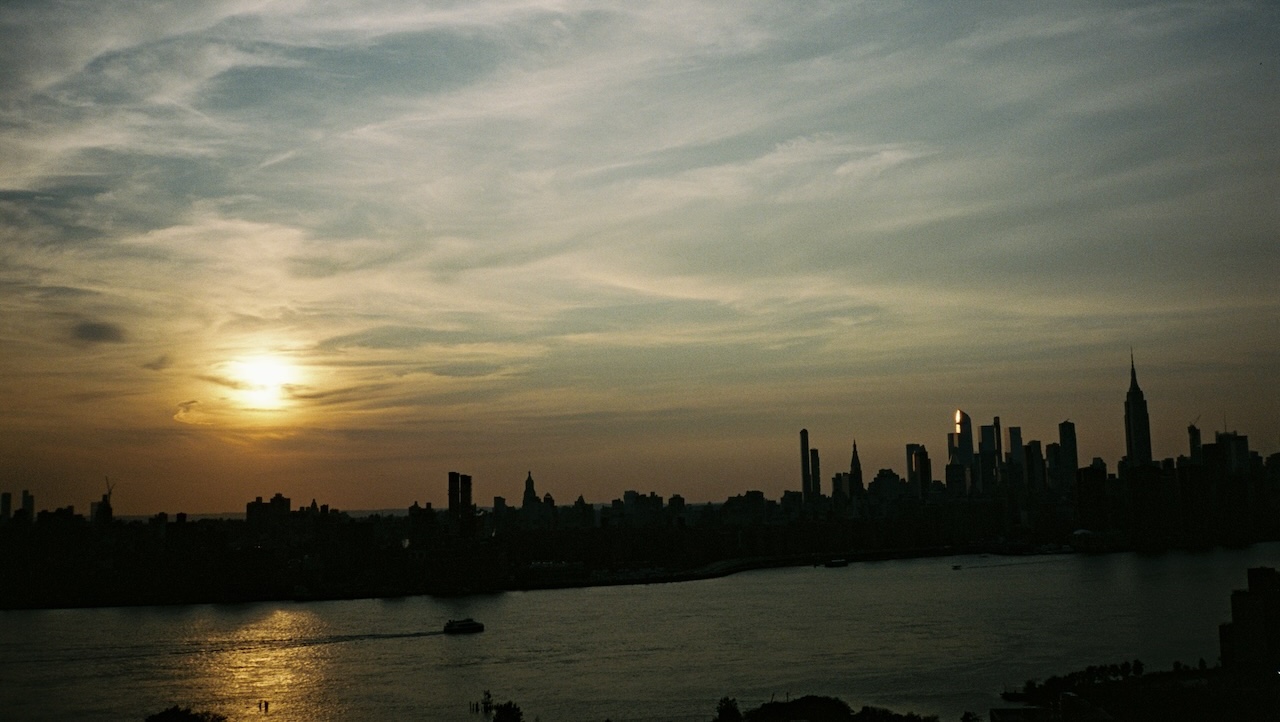This is an edition of Time-Travel Thursdays, a journey through The Atlantic’s archives to contextualize the present. Sign up here.
My facial hair arrived without warning. The real kind, not the middle-school variety, greeted me when I was 21 and returning to college after a year off. I found this development annoying: My face had suddenly assigned me the chore of having to shave it very often.
I should’ve read my Charles Dawson Shanly. In his 1867 treatise on hair in The Atlantic, the poet extolled the revival of facial hair after its many ups and downs throughout history, from 15th-century France until America’s beard-loving Reconstruction. His nearly 7,000-word meditation, entitled “Capillary Freaks,” is long and messy, much like the author’s own mustache was. “The romance of hair is too prolific a subject to be lightly handled,” he rationalized, perhaps to his editor more than anyone. “It was very slow work, to be sure, getting people to separate the idea of folly, or of criminality, from the fact of wearing hair upon the lip.” But, finally, the battle was won. “Nowadays no man is martyred for his heresy on the subject of the razor.”
After a long absence from sophisticated culture, facial hair became more widely accepted in the mid-19th century. Encouraged by a letter from an 11-year-old girl, Abraham Lincoln was the first U.S. president to have a beard. Ulysses S. Grant followed in his footsteps. Seven out of the eight presidents after him would all have envious facial hair, ranging in wildness. There was Benjamin Harrison’s neat trim, Theodore Roosevelt’s asymmetrical handlebar, and Chester A. Arthur’s electrified chops. This lineage ended once William Howard Taft and his proportionately enormous mustache left the White House in 1913. No president since has donned man’s natural accessory, though some count the stubble Harry Truman grew on vacation in 1948—I don’t.
The post-Taft decades were a facial-hair great depression. Generations of young men cycled through the military, which forbids beards. There were concerns about hygiene, and professional settings encouraged a clean-shaven look—which was all the more attainable after safety razors boomed in popularity. The beard came to mean many things in America, none particularly good. “Long black chin whiskers” might signal poverty, as they did for Jesse Stuart in 1939. Or “indifference to public opinion,” as the beard did for Frances H. Eliot in 1945. Or depression, for Leslie Norris in 1977: “He feels dirty with all that beard on him,” an understanding wife says about her husband in Norris’s short story “Shaving.”
By the ’60s, facial hair was considered countercultural, adopted by hippies and revolutionaries. Its appeal widened in the ’80s, thanks to the rise of rugged mustaches. Lawyers and doctors didn’t grow them, but athletes did, as did icons in the professions that end with star (rock, porn, movie).
Then came the flannel-wearing, vinyl-loving hipsters, who killed the cool factor of facial hair. In the 2010s, mustaches were no longer meant to be casually perched upon one’s lip—they were screen-printed on quirky shirts, chained onto novelty sunglasses, and beard-waxed into curls by guys who liked craft beer and indie music. The power of such cringe-ification is nowhere more apparent than in a 2010 Atlantic article by the writer Chris Good, who interviewed Aaron Perlut, the “chairman of the American Mustache Institute” (his real title at the time).
“There is a sexual dynamic between people who have entered the Mustached American lifestyle and the pleasure that they are able to provide to their partners, that only the Mustached American is capable of,” Perlut said. “Those that are not capable of living a Mustached American lifestyle, or are unwilling for some reason, can never quite understand that dynamic, but again it goes beyond our sexual proclivities and more to a full, broad lifestyle.” Okay.
But if facial hair could no longer be cool, it could be something else: common. These days, calculating politicians disappear for weeks to grow beards, in the hope of seeming less calculating. Vice President J. D. Vance and former Transportation Secretary Pete Buttigieg have both adopted beards. So has Senator Chris Murphy—perhaps an effort to shed his pointy-headed image, as my colleague Gilad Edelman suspected. (Murphy denied that he was going “for a more working-dude aesthetic,” as Edelman put it.) Those politicians may not be wrong to think their beards might help their image. My colleague Olga Khazan supported then-Speaker Paul Ryan’s decision to grow a beard in 2015, “since Republicans have struggled to entice women voters.” The Atlantic writer Yair Rosenberg noticed in 2022 that several memes made by Joe Biden’s supporters showed him as “Dark Brandon,” sometimes with a beard, a semi-ironic symbol of the vitality that the president so visibly lacked.
Today, Peak Facial Hair has arguably returned. The New York Yankees, a franchise that long forbade its players from growing a beard, reversed course earlier this year. The post-pandemic beard is ubiquitous, and the beardless ’stache, often paired with a mullet, has become a trendy expression of young masculinity.
After roughly a year of being sufficiently annoyed about shaving so often, I too grew a beard. Then I shaved my chin to look like Chester Arthur for a weekend. Then I shaved the chops, leaving the mustache. Finally, I went clean for a bit, before restarting the cycle last year: beard, mustache, then clean-shaven in time for my job interviews at The Atlantic.
At the moment, I’m back in the mustache stage, sporting a style some call “the Walrus.” I’m happy with the look, but I’m sure my beard will make its eventual return. How can I resist? Peak Facial Hair never lasts forever.


